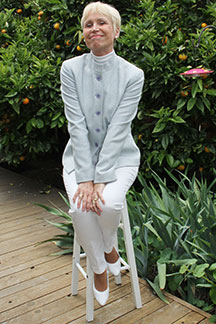Lieutenant General William H. Tunner, affectionately known as “Willie the Whip” revolutionized the United States Air Force military transport logistics like none other. Aside from having successfully commanded the Allied “Hump” operation between India and China and the Korean Airlift, Tunner is best known for masterminding the 1948/1949 Berlin Airlift.
William H. Tunner and the Berlin Blockade
Between 21 June 1948 and 12 May 1949, the Soviet Union blockaded all approaches to West Berlin, by land and by sea. http://www.walled-in-berlin.com/j-elke-ertle/berlin-blockade-and-the-cold-war/ The Western Allies responded by supplying the population of the three western sectors of the city and their occupation troops by air alone. Such a large-scale airlift operation had never been attempted before, and no one knew if it was even workable. A planning committee determined that the city required 4,500 tons of supplies per day. That number represented the bare minimum of food, coal and medicine to keep Berlin’s population alive. When airlift operations began running into problems, Lt. General Tunner was asked to take charge.
William H. Tunner masterminds the Berlin Airlift
The Military Governor of Berlin, General Lucius D. Clay, http://www.walled-in-berlin.com/j-elke-ertle/lucius-d-clay-berlins-defender-of-freedom/ contacted General Curtis E. LeMay when the Berlin Airlift headed for a quagmire. Although the mission had been more or less successful up to this point, it became apparent that the tonnage flown into Berlin fell far short of the tonnage needed. Flight and ground crews were operating without schedules. Aircraft maintenance was haphazard, and loading and unloading of the planes were not well coordinated. The mission had become a “mission impossible”.
That is when General LeMay turned to logistics genius Lt. General William H. Tunner for help. On 29 July 1948, Tunner reported in Germany. Within three days, “Willie the Whip” had initiated his first order to reduce delivery delays. It called for American crew members to remain with their plane at all times once landed. Whether at Berlin-Tempelhof or at Berlin-Gatow airport, once they had taxied to the unloading ramp, planes were now met by large trucks and unloading crews. This order alone greatly reduced turn-around time in Berlin.
William H. Tunner tackles mounting obstacles
Tunner made many more changes. He had airplanes refurbished and additional planes added. Since the planes flew day after day while runways were being repaired, the need for an additional airport became apparent. The problem was that hardly any heavy equipment and definitely no raw materials or skilled labor could be found in all of Berlin. The only way to get large construction equipment into the city was to cut it up at the Rhein-Main airbase in West Germany, load it onto large planes to Berlin, and weld it together again upon arrival. The obstacles seemed insurmountable. But “Willie the Whip” whipped up solutions. He solved the raw material problem by using rock and brick rubble from the bombed-out streets and buildings of Berlin. He solved the labor issue by using thousands of volunteer Berliners who pitched in to save their city. Men, women and children – mostly unskilled – worked around the clock, alongside US Army engineers, to complete the third airport, Berlin-Tegel. Tegel was completed in a mere three months, almost two months ahead of schedule. While these and other procedures were instituted to assure the maximum number of flights per day, the Soviets conducted periodic air maneuvers and anti-aircraft gun practices in the air corridors in an attempt to disrupt airlift traffic.
William H. Tunner fine-tunes the Berlin Airlift operation
Following Tunner’s logistics improvements, the tonnage flown into West Berlin slowly crept up. The calculated daily minimum was reached and soon exceeded http://www.arlingtoncemetery.net/whtunner.htm while pilots from all over the world flew continuous airlift missions through the three 20-mile-wide air corridors, negotiated in the Potsdam Agreement. Throughout the Berlin Blockade, these air corridors remained the only means of access to West Berlin. By the time, Tunner had the missions run like clockwork, loaded planes took off from Frankfurt/Main every three minutes, hit certain check points at pre-determined altitudes and air speeds and descended and landed in West Berlin at the same interval. The pattern of their return was just as exact. “There were, most of the time, 26 planes in the corridor simultaneously. Landing techniques had to be faultless; each point had to be passed at a precise height, at an exact time and at a predetermined speed. There could be no variations and no displays of individual temperament,” says Clayton Knight in “Lifeline in the Sky”.

Typical aircraft Lt. General William H. Tunner had at his disposal during the Berlin Airlift. Photo © J. Elke Ertle, 2015. www.walled-in-berlin.com
On 22 May, 1949 the Soviets lifted the blockade after more than two million tons of food and coal had been flown into West Berlin. The Berlin Airlift was a complete success thanks to Lt. General William H. Tunner’s organizational skills.
For a sneak peek at the first 20+ pages of my memoir, Walled-In: A West Berlin Girl’s Journey to Freedom, click “Download a free excerpt” on my home page and feel free to follow my blog about anything German: historic and current events, people, places and food.
Walled-In is my story of growing up in Berlin during the Cold War. Juxtaposing the events that engulfed Berlin during the Berlin Blockade, the Berlin Airlift, the Berlin Wall and Kennedy’s Berlin visit with the struggle against my equally insurmountable parental walls, Walled-In is about freedom vs. conformity, conflict vs. harmony, domination vs. submission, loyalty vs. betrayal.
















